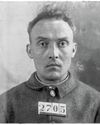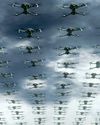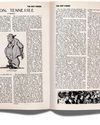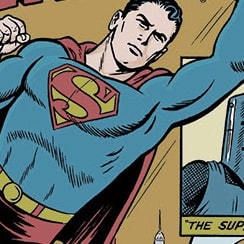Try GOLD - Free
The New Yorker Magazine - July 21, 2025

Flash Sale
1753001999
Go Unlimited with Magzter GOLD
Read The New Yorker along with 9,500+ other magazines & newspapers with just one subscription
View CatalogSubscribe only to The New Yorker
Cancel Anytime.
(No Commitments) ⓘIf you are not happy with the subscription, you can email us at help@magzter.com within 7 days of subscription start date for a full refund. No questions asked - Promise! (Note: Not applicable for single issue purchases)
Digital Subscription
Instant Access ⓘSubscribe now to instantly start reading on the Magzter website, iOS, Android, and Amazon apps.
Verified Secure
payment ⓘMagzter is a verified Stripe merchant.
In this issue
THE TALK OF THE TOWN
Elizabeth Kolbert on Trump and the Texas floods; belly of the beast; Airbnb’s next frontier; Martha Stewart meets her superfans; lifeguard drones.
THE SPORTING SCENE
Serve and Folly
The U.K. yearns for a homegrown Wimbledon champ.
SHOUTS & MURMURS
The Diary of Anna Franco
PERSONAL HISTORY
The Counterfeiters
Working through the case files of criminal ancestors.
A REPORTER AT LARGE
The Next War
Is the U.S. ready for the future of combat?
The New Yorker Magazine Description:
The New Yorker is a weekly magazine that features journalism, commentary, criticism, essays, fiction, satire, cartoons, and poetry. It was founded in 1925 and is published by Condé Nast. The magazine is known for its in-depth reporting, its sharp and witty writing, and its iconic cartoons.
The New Yorker has a long and distinguished history. It has published some of the most important and influential writers of the 20th and 21st centuries, including Dorothy Parker, E.B. White, John Updike, Philip Roth, and Susan Sontag. The magazine has also won numerous awards, including the Pulitzer Prize for National Reporting.
The New Yorker is a must-read for anyone who wants to stay informed about current events and culture. It is also a great source of entertainment and thought-provoking essays.
Here are some of the things you can expect to find in The New Yorker Magazine:
*In-depth reporting on current events, politics, and culture
*Sharp and witty commentary on the news and the world around us
*Essays on a wide range of topics, from personal experiences to philosophical musings
*Fiction by some of the best writers in the world
*Satire and cartoons that poke fun at the powerful and the ridiculous
If you are looking for a magazine that is intelligent, informative, and entertaining, then The New Yorker is the magazine for you. It is a magazine that has something to offer everyone.
Recent Issues

July 07 - 14, 2025 (Double Issue)

June 30, 2025

June 23, 2025

June 16, 2025

June 09, 2025

June 02, 2025

May 26, 2025

May 12 - 19, 2025 (Double Issue)

May 05, 2025

April 28, 2025

April 21, 2025

April 14, 2025

April 7, 2025

March 31, 2025

March 24, 2025

March 17, 2025

March 10, 2025

March 03, 2025

February 17-24, 2025 (Double Issue)

February 10, 2025

February 03, 2025

January 27, 2025

January 20, 2025

January 13, 2025

December 30, 2024 - January 6, 2025

December 23, 2024

December 16, 2024

December 09, 2024

December 02, 2024
Related Titles

Archaeology

Travel, Taste and Tour

True West

Russian Life

Faces - The Magazine of People, Places and Cultures for Kids

Scoop USA Newspaper

Good Old Days

VOZ Magazine

The Iowan

Whispering Wind

Chtenia: Readings from Russia

Dots x Circles Illustration

Sculpture

Study in the USA

24 Characteristics of a Genius

Carvell Family History

Best of British

BBC History UK

The Scots Magazine

Who Do You Think You Are? Magazine

All About History UK

History of War

The Overhead Railway

New Brighton

The Way We Worked

Scottie Road

Liverpool Then

100 Years of the Liver Birds

Liverpool Then Volume 3

The Way We Lived


































